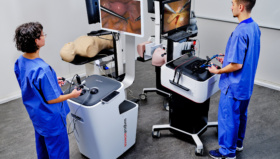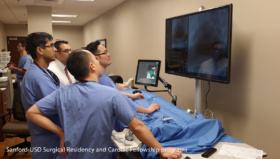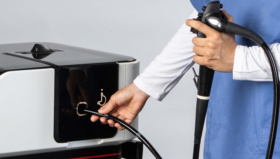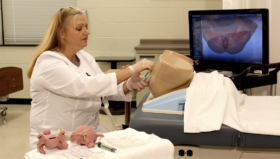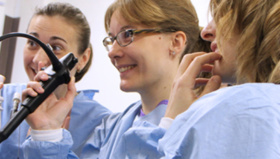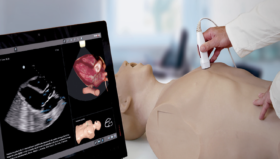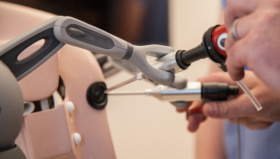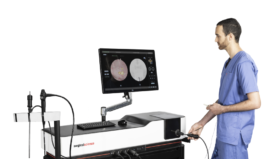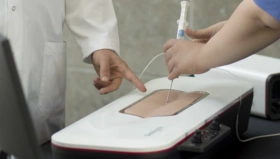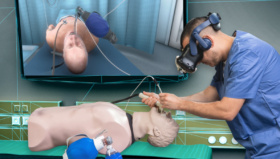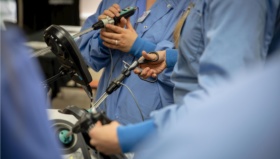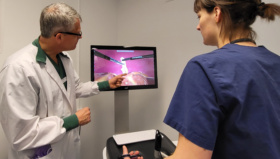LapSim an Integral Part of Gynecologists Assessment

Dr Doug Barclay is a British-trained consultant obstetrician and gynaecologist specialising in minimal access surgery at Middlemore Hospital in Auckland, New Zealand. He is passionate about education and introduced New Zealand’s first laparoscopic training programme for registrars and junior doctors when he arrived in the country in 2009. Here, he talks about how LapSim simulators from Surgical Science have become an integral part of the training and assessment of gynaecologists across New Zealand.
When Dr Doug Barclay arrived in New Zealand from the UK in November 2009, one of his primary objectives was to look at ways of bringing simulation into his new training programmes for Obstetrics and Gynaecology students.
“My passion has always been education,” Dr Barclay says. “I was lucky enough to have two great mentors during my studies in the South West of England: Dr Jonathan Frappell, who was the President of the British Society of Gynaecological Endoscopy; and Dr Tim Draycott, a leading figure in the development of PROMPT (Practical Obstetric Multiprofessional Training). They were a tremendous influence on me and gave me a lifelong passion for minimally-invasive surgery, and the use of simulation in medical training.”
At Middlemore Hospital, Dr Barclay became one of the first surgeons to regularly perform minimally-invasive hysterectomies, and he saw an opportunity to make laparoscopic simulation a focal point for his new training programmes. But first he needed to find the right simulators. He was already aware of Surgical Science, having seen an evidence-based report from Scandinavia that showed trainees gained proficiency much faster when they used a laparoscopic simulator.
“When studying these types of surgeries, you need to overcome three basic problems early in your training. First, you have to convert 2D pictures into 3D in your head; Next, you have to overcome the lack of haptic feedback; and finally, you have to adjust for the ‘fulcrum effect’ – that is, moving the instrument in the opposite direction to where it’s going inside the patient.
If you can practise those skills on a simulator it will help you enormously in the operating environment. In Scandinavia, they embedded simulation work into their training programmes, and you couldn’t pass until you’d completed it. That was something I’d never seen before, and I was keen to replicate it with my students.”
‘World Famous in New Zealand’
Under Dr Barclay’s direction, Middlemore Hospital invested in two LapSim simulators from Surgical Science – the first of their kind to be used in New Zealand – but it was quickly apparent that demand for using these simulators stretched far beyond the Auckland area.
“There’s a phrase here: ‘world famous in New Zealand’, and that definitely applied to us. At first, I was trying to pack up the simulators into the back of my car and drive around the country to get them to more people. But they are not the most portable, and I quickly realised I was not cut out to be a travelling showman! So, the simulators stayed put, and we developed our programme to ensure all trainees had the opportunity to come to us at some point during their studies.”
This move was supported by RANZCOG (Royal Australian and New Zealand College of Obstetricians and Gynaecologists), and now all the registrars in New Zealand are invited for a two-day practical, immersive course at Middlemore Hospital to hone their skills on the simulators. However, Dr Barclay is keen to stress that simulation alone cannot prepare a trainee for the operating theatre. You still need a solid educational framework and, crucially, a mentor who can help you thrive in the ‘live’ environment.
“Just because you’ve got a posh bit of kit, it’s not going to fix all the challenges of training in a hospital. They say operating is 20% technical skill and 80% decision-making, and I think that’s about right. A surgeon is influenced by many factors during an operation: anaesthetic, staff, timings, complications. There are scenarios that only experience can teach you. But what is fantastic about the simulators is that they allow you to do the technical stuff without thinking about it. It’s like changing gear in a car – it just becomes second nature. Then you can improve your decision-making over time without worrying that your technical ability might be lacking.”
A level playing field
Dr Barclay says that simulation can be extremely useful for levelling the playing field and making laparoscopic surgery accessible to everyone. It takes away the risk factors associated with the apprenticeship model of training and lets trainees learn from the mistakes they make in a safe environment. Crucially, it allows them to make a seamless transition from academic excellence into practical aptitude using data-driven assessment.
“There’s this myth about surgeons that you have to have ‘good hands’, but I think that’s outdated. We need to move away from the idea that you have to ‘be a natural’ to make a good surgeon. Actually, anyone can do this kind of work, they just need the right education framework, a good mentor, and the right practical tools during the training process. What these simulators help us to prove is that everyone learns at a different pace, but they all get there eventually.”
Read more about LapSim here.
